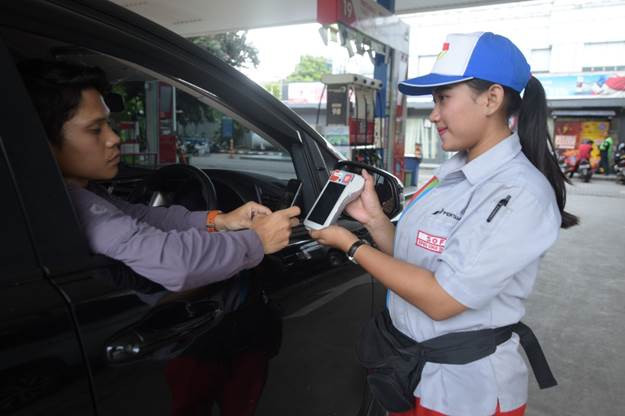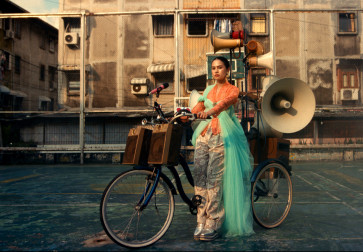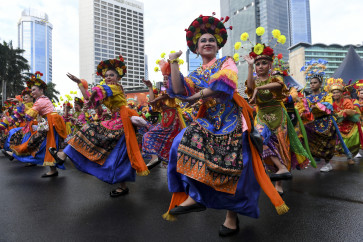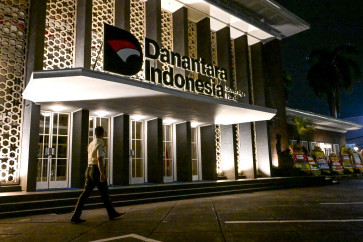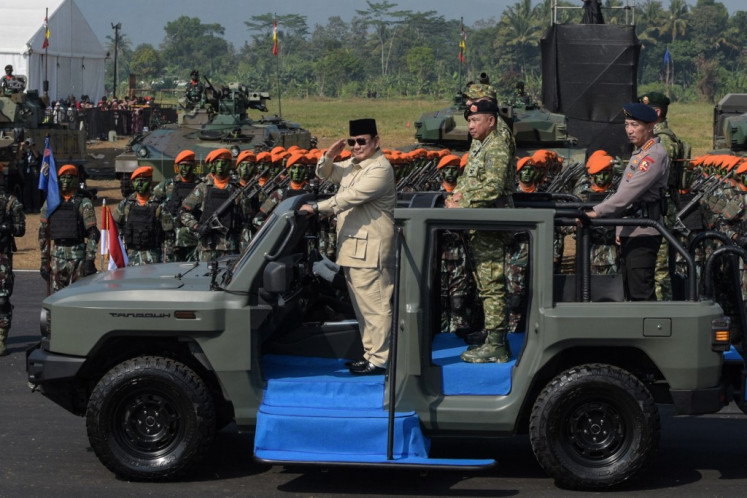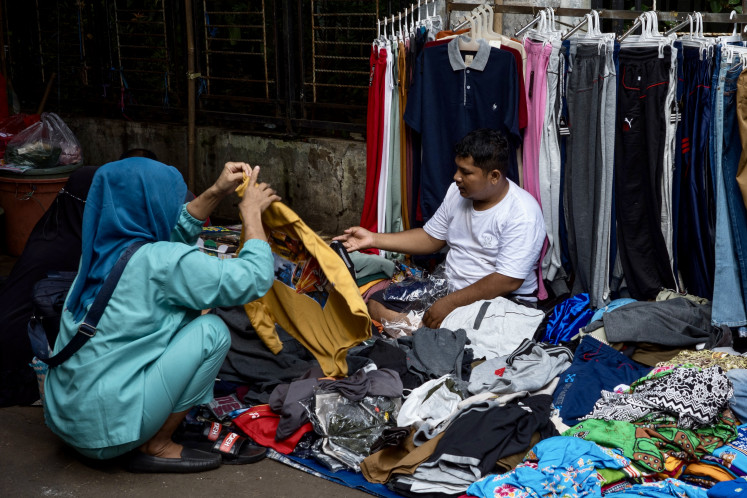Popular Reads
Top Results
Can't find what you're looking for?
View all search resultsPopular Reads
Top Results
Can't find what you're looking for?
View all search resultsPertalite, Solar supplies causing concern
Pertamina gives assurance consumers ʻneed not worry’ about shortages for time being.
Change text size
Gift Premium Articles
to Anyone
P
urchase restrictions may be required to prevent an imminent shortage of Pertalite gasoline and Solar diesel amid surging consumption of the two subsidized fuel brands and their consequent dwindling supply.
Ahmad Zuhdi Dwi Kusuma, an industry and area analyst at state-owned Bank Mandiri, has warned that the government’s expected plan to increase subsidized fuel prices, in itself, will not significantly reduce the consumption of Pertalite and Solar.
Therefore, he said, policymakers need to immediately control the distribution of Pertalite and Solar, as supplies of the two subsidized fuel brands continues to thin out as a result of spiking demand.
“So far [the government] is providing fuel subsidies to people who are not supposed to receive them. [Therefore], limiting distribution will help reduce [pressure] on the ballooning budget for subsidies and compensation,” Zuhdi told The Jakarta Post on Wednesday.
He estimated the subsidized gasoline quota will run out some time in early October, based on a calculation that monthly demand for Pertalite amounts to 2.4 million kiloliters (kl).
As of July, state-owned oil and gas company Pertamina had a stock of 6.2 million kl of Pertalite and 5 million kl of Solar.
Read also: Pertamina delays curbs on subsidized fuel purchases
Irto Ginting, acting corporate secretary of Pertamina commercial and trading arm PT Pertamina Patra Niaga, said on Wednesday that Pertalite and Solar supplies would suffice for the next 19 days and 21 days, respectively.
He went on to say that Pertamina continued to produce both brands of fuel on top of the relatively secure supply and he remained confident that consumers “need not worry” about facing shortages of subsidized fuel for the time being.
“But, [Pertalite and Solar] ideally should be aimed at those who are in need,” Irto told the Post.
Subsidized fuel purchase curbs delayed
Pertamina Patra Niaga has deployed digital technology to restrict the sale of Pertalite, its subsidized RON-90 fuel, as well as its diesel brand Solar, to curb subsidized fuel consumption.
By registering customer vehicles through a smartphone app, Pertamina aims to ensure that people who are ineligible to purchase subsidized fuel are prevented from doing so.
However, the company will need to wait for the ratification of Presidential Regulation No. 191/2014 concerning distribution, retail pricing and eligibility criteria for the purchase of subsidized fuel.
“We are still waiting for more updates on the regulation,” Downstream Oil and Gas Regulatory Agency (BPH Migas) fuel oil director Alfon Simanjuntak told the Post when asked about progress on the revised rule.
Read also: Pertamina delays curbs on subsidized fuel purchases
Energy and Mineral Resources Minister Arifin Tasrif recently revealed to reporters that subsidized fuel would run out in mid-October in a business-as-usual scenario, noting that cumulative Pertalite consumption as of August had reached 80 percent of the allocated 23 million kl this year.
Consequently, Arifin said that the government planned to add another 6 million kl to the Pertalite quota and 2 million kl to the Solar quota, set for this year, bringing the total allocation for both subsidized brands to 29 million kl and 16.91 million kl, respectively.
“[The government] is trying to add about 5 million to 6 million kl [for Pertalite] to continue providing [subsidized fuel oil] for the people,” he said last Friday.
Finance Minister Sri Mulyani Indrawati said, also last Friday, that subsidies and compensation spending for gasoline, diesel and liquefied petroleum gas (LPG) was “not right on target”.
For example, as part of the 2022 state budget, US$149 trillion was allocated for 15.1 million kl of Solar diesel, with 89 percent of the funding allocated to industry and 11 percent to households.
Meanwhile, 95 percent of fuel consumers in the household group are in the middle- and upper-income bracket rather than the groups who should benefit, which are those among the bottom 40 percent of income earners in the country.

